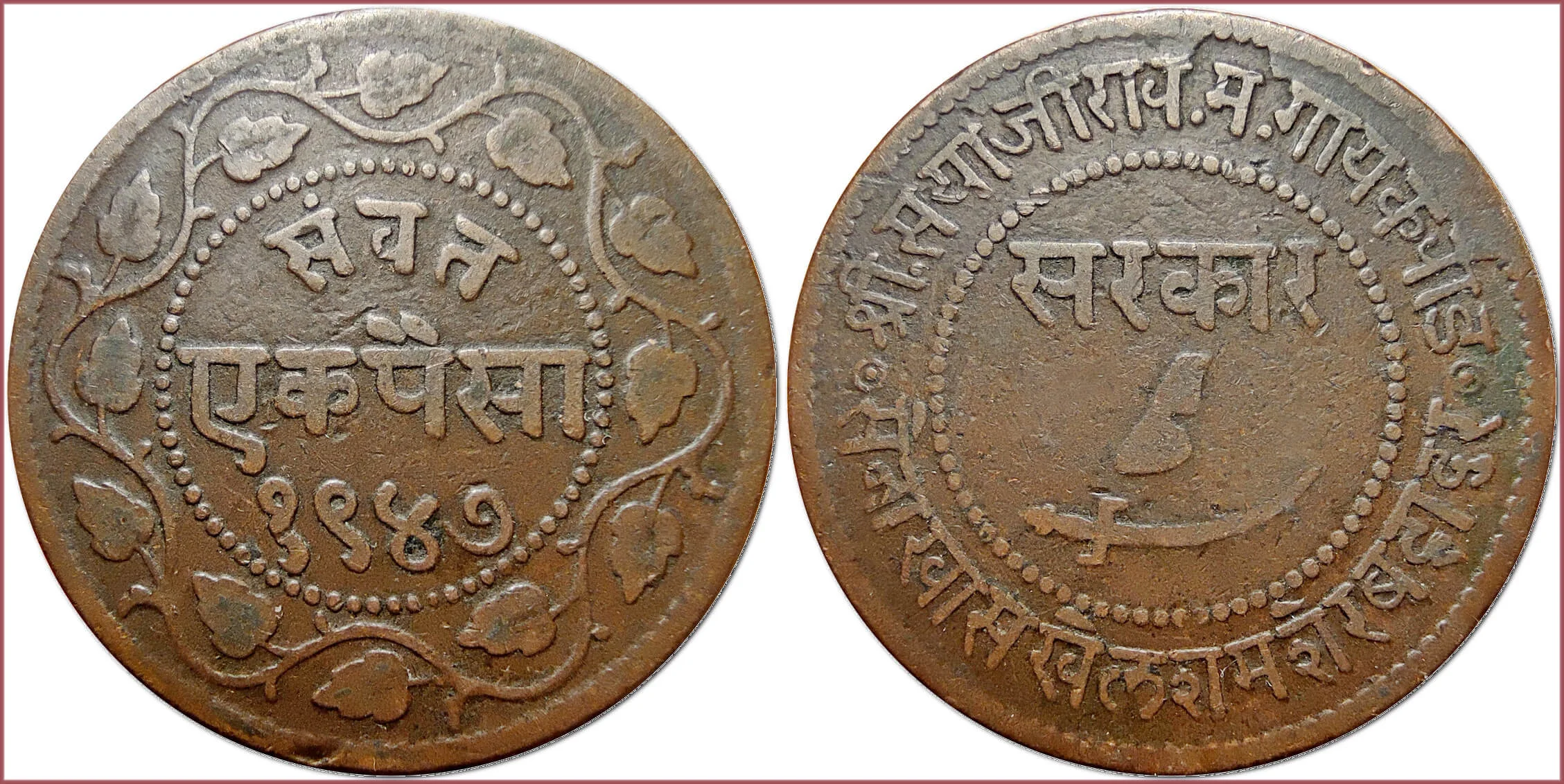PAISA: COIN OF BARODA (INDIA)
1 paisa, 1890: Baroda State (India)
Baroda State (बडोदा संस्थान) — during 1721-1949 a Princely state in present-day Gujarat (state of modern India in the western coast of Hindustan peninsula).
Ruler: Sayajirao Gaekwad III — the ruling Maharaja of Baroda State during 1875-1939. In 1947, British India was partitioned into two independent dominions — India and Pakistan. Pratap Singh Rao Gaekwad — grandson of Sayajirao Gaekwad, who became the next ruler of Baroda, acceded his state to the Dominion of India in 1949.
Date on coin: VS 1947 (VS: "Vikram Samvat" — Hindu calendar used in the Indian subcontinent; in India it is used in several states) = 1890 (Gregorian calendar).
The legends on the coin are written in the Devanagari script of the Konkani (an Indo-Aryan language spoken by the Konkani people, primarily in the Konkan region, along the western coast of India) /other sources indicate that the texts on the coin are in Hindi/.
संवत: Samvat (Vikram Samvat or Bikram Sambat — Hindu calendar historically used in the Indian subcontinent. Vikram Samvat is generally 57 years ahead of Gregorian Calendar).
एक पैसा: one paisa.
१९४७: 1947.
Plant ornament.
श्री.सयाजीराव.म.गायकवाड: Shri. /Shrimant/ Sayajirao M. /Maharaja/ Gaekwad.
सरकार: Government.
सेना खास खेल शमशेर बहादुर: Sena Khas Khel Shamsher Bahadur (various translations of the inscription can be found, but it seems that it refers to the titles of the ruler of Baroda, which is most often translated as "the Commander of the armies of the state and distinguished swordsman").
Horse hoof and talwar (a type of curved sword or sabre from the Indian subcontinent) within beaded circle.
- Copper: 25 mm - 7.66 g
- Reference price: 7.5$
COIN PAISA (plural: paise) — WHERE & WHEN (coins catalog: by names & emitents)
- INDIA, various state entities on the territory of modern India (16th-21th centuries): paisa = 1/64 rupee, later — 1/100 rupee
- PAKISTAN: paisa = 1/60 rupee
- AFGHANISTAN (1882-1929): paisa = 1/60 rupee
- NEPAL (1961-...): paisa = 1/100 rupee
PAISA as coin name is extremely popular in Southeast Asia and has been known for many centuries.
The term "paisa" derived from the Sanskrit term padāṁśa (पदांश), meaning "quarter part of base" (from pada /पद/ — "quarter" and aṁśa /अंश/ — "part" or "unit").
Very strangely, I cannot find fourth part of which currency the paisa was at the time of its appearance. However, it is known that from about the 18th century, the paisa (as well as pice) was 1/4 of a coin of the anna denomination.
There are related names of coins: pice, pysa, poisha, pesa...











